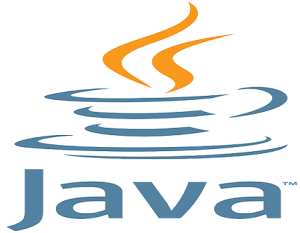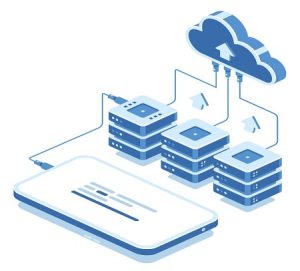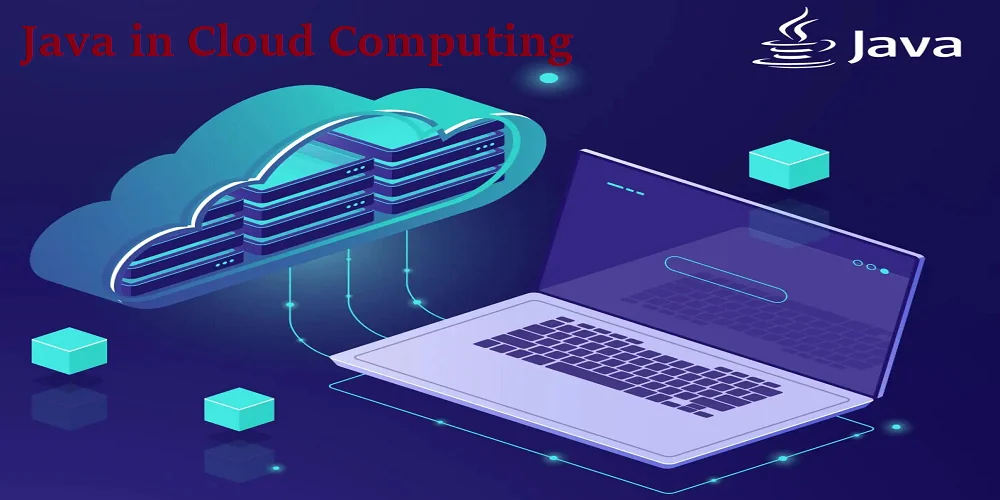Today, in the dynamic business world, living a step forward is all about bringing innovation and adaptation at all times. Businesses will need the right, scalable, and secure technology solution to fuel growth and enable them to remain at the forefront of their game. And right there is where Java development services truly steps to the fore. Driving Business Growth with Java is not just a slogan; rather, it is a fact that many companies from all types of sectors swear by.
Java is probably among the most common programming languages; it has been in the software development top for over 28 years. This language is mainly popular for its strong sides: platform independence, powerful library ecosystem, and focus on security. These core features translate into practical benefits that driving businesses to achieve significant growth. This article explores how Java solutions for business growth are realized through innovative applications, efficient system modernization, and a future-proof approach to technology.

Image: Java Logo
Core Competences of Java for Driving Business Innovation
Platform Independence (Write Once, Run Anywhere)
One of the most significant benefits of Java is its ability to transcend operating systems. Byte code is a platform-neutral format that is generated when Java code is compiled. Further, the Java Virtual Machine (JVM) interprets byte code applications. This allows the application to run seamlessly on any system with a JVM installed. Following are a few of the merits to business that this Write Once, Run Anywhere concept delivers:
-
Reduced Development Time and Cost
Developers write their code once and make very small changes to the code so that it can be deployed on various platforms (Windows, macOS, and Linux). This, in fact, drastically reduces the development cost and time because there will be no necessity for developing and maintaining multiple stand-alone code bases for different OS.
-
Wider Market Reach
Applications written in Java can be compiled to run on a variety of different platforms and operating systems, therefore reaching a wide user population. This is especially important for businesses that need a wider range of users and new markets.
-
Simple to Maintain
Updates and bug fixes only need to be implemented once in the Java codebase. This simplifies maintenance and ensures consistent functionality across all platforms.
Rich Library Ecosystem
One of the blessings of Java is that it enjoys one of the biggest ecosystems of available pre-built components, frameworks, and APIs (Application Programming Interface). These libraries offer developers ready-made solutions for most common programming tasks, which help in shortening development cycles. At the same time, reduce the possibility of reinventing the wheel. Popular frameworks like Spring and Hibernate come with strong features for database access, web development, and enterprise application development, respectively. This healthy ecosystem, therefore, enables businesses to do the following:
-
Accelerate Development
Developers can use pre-built solutions and not invest their time in reinventing the wheel, but focus on core business logic and unique functionalities, which increases development and deployment speed.
-
Improve Code Quality
Well-established libraries are typically well-tested and documented, ensuring higher code quality and reducing the risk of bugs.
-
Enhance Maintainability
Libraries typically adhere to a kind of standardized coding practices and conventions that make the codebase maintainable and clear for the future.
Java’s Impact on Business Growth
Scalability and Performance
IT needs usually change as businesses grow. Being designed with high scalability in mind, Java applications can handle increased data volumes and user loads. This scalability is achieved through robust architecture, plus features such as garbage collection that take care of memory allocation and prevent memory leaks automatically.
Further, Java applications are optimized in their performance by making use of techniques like Just-In-Time (JIT) code compilation to be able to translate bytecode into machine code at runtime, improving application speed. This combination of scalability and performance ensures that Java solutions for business growth remain relevant even as the business scales its operations.
Security
This is the age of digital technology: it is all about data security. Java is a very secure language, and the strong type-checking used in Java mostly catches mistakes in the development of a program. Java’s sandboxing mechanism restricts applications from accessing system resources beyond their designated scope, mitigating security risks. This makes Java an attractive option for driving businesses working with data that requires sensitive handling and ensures trust and confidence with their customers.
Table: Key Java Features Driving Business Growth
| Feature | Benefit | Impact on Business Growth |
| Platform Independence (Write Once, Run Anywhere) | Reduced development time and cost, wider market reach, simplified maintenance | Faster time-to-market, increased revenue potential, lower IT costs |
| Rich Library Ecosystem | Accelerated development, improved code quality, enhanced maintainability | Reduced development overhead, fewer bugs, easier codebase management |
| Scalability | Efficiently handles increasing data and user loads | Supports business expansion, accommodates future growth |
| Performance Optimization | Delivers fast and responsive applications | Improves user experience, enhances productivity, increases customer satisfaction |
| Security | Robust security features protect sensitive data | Build trust with customers, minimize security risks, and safeguard business reputation |
Java-Driven Business Transformation
Java Solutions for Business Growth extends beyond building new applications. Java’s capabilities are instrumental in driving business transformation across various industries:
FinTech
Java is the key to developing secure and scalable financial applications related to mobile banking, online payments, and fraud-detection systems.

Image: Java Applications in FinTech
E-Commerce
Java stands behind E-Commerce websites with high performance, helping to cope with enormous volumes of traffic, complex product catalogs, and delivering a seamless online shopping experience.

Image: Java Applications in E-Commerce
Healthcare
Java has been used to build applications for healthcare, such as Electronic Medical Records (EMR), patient portals, and medical imaging analysis. Its security features are so important to safeguard sensitive patient data.

Image: Java Applications in Healthcare
Manufacturing
Java applications are used for the automation of the product line and inventory management, which also helps in the optimization of the supply chain during the manufacturing process.

Image: Java Applications in Manufacturing
Big Data and Analytics
Java frameworks, such as Apache Spark, capitalize on the strengths of Java for processing and analyzing humongous datasets by business enterprises to derive big data insights and make decisions based on data.

Image: Java Applications in Big Data and Analytics
These are just a few examples; the possibilities of Java are boundless. It is flexible and thus helps it fit into different industry needs, making it a powerful tool for Java-driven business transformation.
Case Studies
Case Study 1: Walmart
1) Challenge
For a mega-retailer like Walmart, the problem was its archaic supply chain management system. This made them inefficient and not at all agile. The system was old and not scalable; at the same time, it was very challenging to integrate other newer technologies with this system. This hampered Walmart’s ability to optimize inventory management and adapt to changing market demands.
2) Solution
To escape facing such problems, Walmart started a modernization process based on Java. Old elements are either to be written or adapted with new, modern Java-based applications. In this way, Walmart was able to take full advantage of the scalability and performance capabilities that Java offers. Additionally, the vast Java developer pool facilitated the recruitment of skilled professionals to handle the modernization process.
3) Outcome
Walmart’s Java-driven modernization efforts yielded significant results. The enhanced system helps them have a better scalable system, thus allowing the inventory to be handled for a large number of stores. The added data analytical functions and their association with new technologies improved the process of analysis, which further resulted in better forecasting and demand planning. This raises in operational efficiency for Walmart and hence the availability of products for customers.
Case Study 2: Uber
1) Challenge
Uber’s mission to revolutionize urban transportation came with significant hurdles. Matching the requests of riders with available drivers in real-time across huge cityscapes demanded a robust system that could handle a torrent of data. The need for near-perfect scaling was also paramount to this platform, as it is the only way to cater to the rapidly growing user base that begins to endanger existing infrastructures.
2) Solution
Java was deliberately and very smartly chosen by Uber as the backbone of the backend infrastructure. The following strengths of Java played a vital role in making Uber a success:
-
-
- Real-Time Data Processing: Apache Kafka, which is Java-based, has been the secret sauce for Uber. It has made real-time ingestion and processing of data streams possible. This involves real-time processing of rider requests and driver locations. This capability allows Uber to connect passengers with available drivers in a time-efficient manner, cutting the overall waiting time and reducing frustration.
- Unmatched Scalability: The highly capable throughput of Java, along with its natural scalability, has been the driving factor contributing significantly to the shaping of Uber. In developing a microservices architecture based on Java, Uber assured that its infrastructure would scale out to meet the rising demand as its user base grew exponentially.
- Location Services Integration: Java needed to be compatible with the APIs of many location-based services, which allowed Uber to easily integrate real-time location tracking between the riders and drivers. This optimized not only journey times but also the user experience through the provision of precise arrival estimations.
-
3) Outcome
Using Java’s capabilities, Uber built a highly scalable and efficient platform that has changed on-demand transportation. Leveraging Java’s capabilities for real-time data processing, Uber could match riders to drivers in the fastest way possible, therefore reducing incidences of waiting. Such abilities, coupled with the platform’s scalability, would ensure its smooth running, even if the Uber service expanded to new cities and acquired millions of users across the world. Besides, Java was LBS API-compatible for seamless location tracking, thereby improving the user experience and driver navigation.
Modernizing Legacy System with Java
Many businesses struggle with outdated legacy systems that hinder agility and innovation. Java paves the way for Java-driven business transformation by modernizing efforts. Legacy applications can either be rewritten or simply integrated with Java-based components to:
Improve Efficiency
Modern Java applications are known for their performance and scalability, leading to improved processing speeds and streamlined operations.
Enhance Security
Older legacy systems could be exposed to security breaches. Java, as a very secure application, is known to mitigate such security threats, safeguarding sensitive data for driving business.
Enhanced Maintainability
Modernizing with Java allows businesses to leverage the vast developer community and readily available resources for easier maintenance and future development.
Java Development for Startups and Small Businesses
Startups and small businesses often face concerns about cost and resource limitations when considering Java development. However, Java offers several advantages that make it a compelling choice:
Large Developer Community
Java boasts a vast pool of skilled developers, which makes it easier for even small businesses to find developers.
Open-Source Ecosystem
Most popular Java libraries and frameworks are developed as open-source, which again helps to reduce licensing costs and to have easily available solutions.
Long-Term Support
Oracle offers long-term support for Java by providing access to security updates as well as continued improvement.
Scalability
Java applications are designed to scale efficiently, allowing startups to build solutions that can grow alongside their business.
By leveraging these strengths, startups and small businesses can utilize Java development for business success without breaking the bank.
The Future of Java: Staying Ahead of the Curve
Java is always in a phase of evolution so it remains relevant with the changes in technological landscapes. Today, with businesses leveraging IoT, big data, and managed cloud services, Java is evolving to address these challenges.
Cloud Adoption
Java frameworks, for instance, Spring Cloud and Micronaut, have made cloud development and deployment quite easy. It helps in driving businesses to leverage the scalability and flexibility of cloud platforms.

Image: Cloud Adoption
Big Data Integration
Java frameworks such as Apache Spark and Flink have made it possible to handle and analyze data on a massive scale using Java’s power to provide voluminous insights for making use of decisions.

Image: Big Data Integration
IoT Support
Java libraries and tools such as Eclipse Kura, are emerging to facilitate the development of IoT applications that connect devices, collect data, and drive intelligent automation.

Image: Eclipse Kura Logo
By embracing these emerging trends, firm owners ensure that their Java solutions for business growth will not fade away over time.
Explore the comparison between Java 23 and Java 22 to understand the key differences and enhancements.
Conclusion
Java development is not just a technology choice; it’s a strategic investment in driving business growth with Java. Its core qualities of platform independence, rich ecosystem, and strong security focus driving businesses to innovate application building, modernize legacy systems, and embrace future technologies.
Whether you’re a startup or an established enterprise, Java offers a robust foundation for achieving your business goals. In this digital age, Java has the consistency to maintain the powerful tool that a successful business requires. Let us help you open up a world of innovation and growth with the power of Java development.
Frequently Asked Questions (FAQs)
1) Can Java suit my business?
Since Java is versatile and strong, it finds applications within a huge swathe of business needs. So, if you need something safe, scalable, and future-proof concerning software development, look no further than Java.
2) What does Java development cost?
Costs will be determined based on the complexity of a project, developer experience, and location. However, its large developer pool and open-source ecosystem can help manage costs.
3) How can I hire a skilled Java developer?
Several online platforms connect businesses with skilled Java developers. Besides, there are a few companies specializing solely in Java development that can send their highly skilled teams to cover all your project needs.
Read more:



